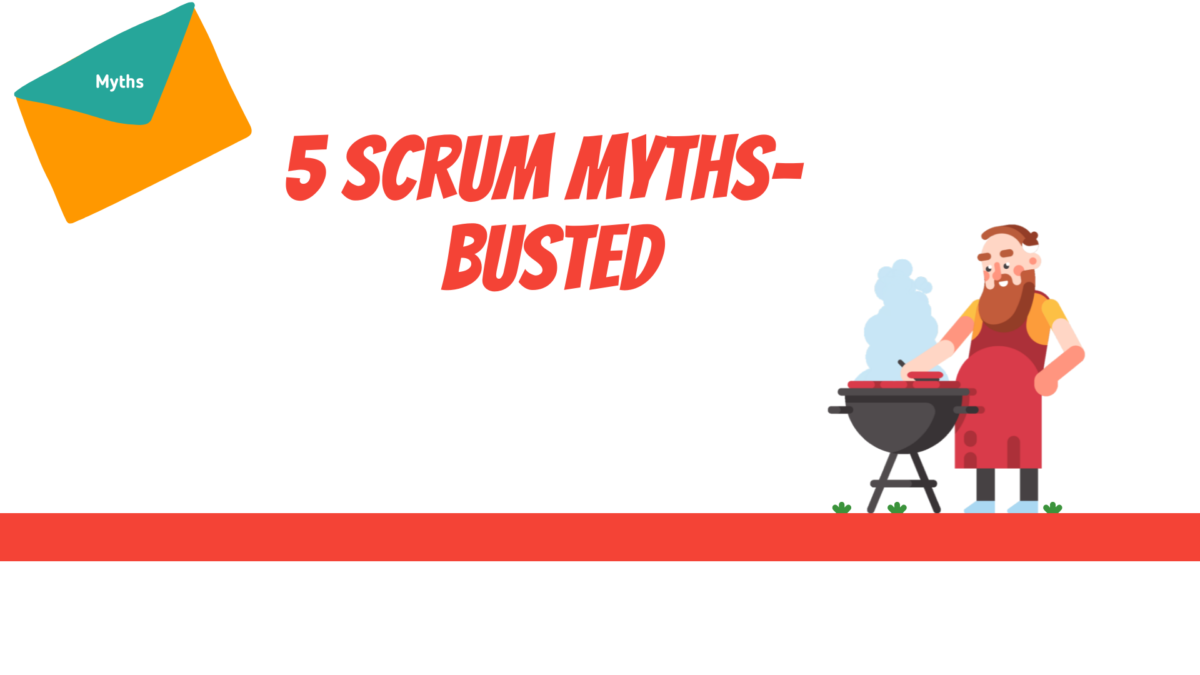Myth 1 – Scrum is a Methodology
To bust this first myth, I would prefer to differentiate between the concepts of methodology and framework clearly.
| Methodology | Framework |
| A specific methodology is a well-defined set of principles, concepts, tools, and associated practices that guide processes to meet a focused goal. The methodology is fundamentally more prescriptive. | On the other hand, a framework is a flexible yet incomplete structure that leaves space for different practices and related tools requisite for the overall process. Thus, a framework is, practically, less prescriptive. |
People often refer to Scrum as Methodology.
Scrum is, from a practical point of view, not at all a methodology. Instead, scrum focuses on the scientific implementation of empiricism. As a result, it strikes the chord between well-defined principles and associated practices in a balanced manner.
Self-Managing teams and their dedicated, collective intelligence form the basis of Scrum. The teams solve varieties of complex problems through a series of adaptive solutions.
Myth 2 – Agile is equivalent to Scrum
50% of people I interact with using the terms Agile and Scrum interchangeably. When they say something like ‘We are performing or doing Agile’, they mean they are doing Scrum. On a practical note, these two things are not the same.
Scrum is invariably a technical, lightweight framework. It strategically helps teams and organisations generate value via adaptive solutions suitable to solve various complex problems.
Agile covers a larger arena with a well-defined set of values, concepts and principles. Scrum does fall under the expansive umbrella of Agile, but there are many other concepts like it.
In addition, implementing Scrum never means you are agile. To become agile, developing an agile mindset is extremely important. Implementing Scrum doesn’t guarantee that you would become Agile but certainly helps build habits that can enhance Agility.
Myth 3 – Cross Functionality means each team member should perform every task
A cross-functional team is an efficient group of people who have a clear goal, representing various disciplines under the concerned organisation.
The combined efforts of the team are meant to add value to the process. Scrum teams are, by nature, cross-functional. This does not mean every team member would display every kind of skill. It means the cross-functional attribute of the Scrum team would benefit the team and organisation from an overall perspective.
It is impractical to expect each team member to be well-versed with all the available technologies and skills in the current competitive world. Instead, a top-class Scrum team knows how to value team members with multiple skills.
Myth 4 – Velocity is an intrinsic element of Scrum
Most of the Scrum teams use the concept of velocity for forecasting the probable completion dates. But it is technically a purely complementary practice within the realm of Scrum.
There is no need for the Scrum teams to leverage velocity as one of the metrics. This is because Scrum Framework does not consider velocity as one of its intrinsic elements. Still, many Scrum teams continue to do so. This is reasonably good when velocity is not regarded as a commitment.
Myth 5- The Product Owner decides the sprint goal.
Scrum tells that Sprint’s single objective is the Sprint Goal. It is specifically a commitment by the developers. I frequently hear that the Product Owner is responsible for determining the Sprint Goal during Sprint Planning. It is not at all true.
The Product Owner has a particular Business Objective. He coherently communicates it to the self-reliant Scrum team.
Fundamentally, the Sprint Goal is rigorously and strategically a collaborative effort involving the whole Scrum team. Scrum guide never says that the Product Owner decides the Sprint goal.
Any Other such Scrum Myths you have heard?
In this write-up, I have busted five myths related to Scrum. In your organisation, have you come across any other myths? You can share whatever thoughts you have in the comment section below.
About Author
Venkatesh Rajamani has more than 17 years of experience delivering working software in short, feedback-driven cycles.
Venkatesh is based in Chennai, India and sets the overall direction for tryScrum. He is the world’s first person to hold PKT, CAL-Educator, PST, CEC & CTC together. He loves reading books, travelling and public speaking.


